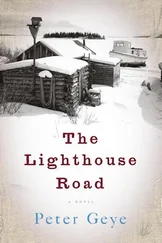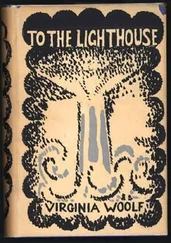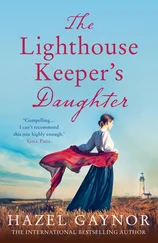Later, still smitten with guilt over his exile from Scotland and his family, he wrote a revealing poem.
Say not of me that weakly I declined The labours of my sires, and fled the sea, The towers we built and the lamps we lit, To play at home with paper like a child. But rather say: In the afternoon of time A strenuous family dusted from its hands The sand of granite, and beholding far Along the sounding coast its pyramids And tall memorials catch the dying sun, Smiled well content, and to this childish task Around the fire addressed its evening hours.
In practice, the idea of Louis as an engineer was absurd; he was far too physically frail to have lived the working life of his father and grandfather. But he remained haunted by the notion that his writer’s life was somehow less noble or worthy than the rest of his family’s more practical achievements.
One of Louis’s many attempts to redress the balance was in an unfinished Stevenson biography, Records of a Family of Engineers. The early Stevensons, he discovered, had supplied nothing but generation upon generation of tenant farmers, with the exception of John, a seventeenth-century ancestor and ‘eminently pious man’ who seemed determined on Protestant martyrdom. John spent ‘four months in the coldest season of the year in a haystack in my father’s garden’ and sleeping in Carrick fields under a blanket of snow. Though he did contract scrofula, he was spared persecution, to his apparent disappointment, in the religious purges of the 1680s. With the exception of John, however, Louis’s genealogy was one of stolid mediocrity. ‘On the whole,’ he wrote, ‘the Stevensons may be described as decent reputable folk, following honest trades – millers, maltsters and doctors, playing the character parts in the Waverley Novels with propriety, if without distinction, and to an orphan looking about him in the world for a potential ancestry, offering a plain and quite unadorned refuge, equally free from shame and glory.’ In the absence of glamorous fact, Louis felt himself forced to resort to speculation. He considered the possibility of a Scandinavian connection, evidence of a French alliance and, more imaginatively, the link with a Jacobite past. By the time Louis had completed his history, the family had acquired a smattering of Highland credibility and a link with that most glamorous of cattle-rustlers, Rob Roy MacGregor. Later biographers noted crushingly that none of this wishful thinking was true. The Stevensons were descended from quiet Lowland Whigs, none of whom ever had a dangerous political thought in their lives.
Louis’s real interest in the Stevensons began with the birth of his paternal grandfather, Robert Stevenson. Robert’s father, Alan, was a Glasgow maltster who married the daughter of a builder, Jean Lillie, in 1771. On 8 June 1772, their only son was born. Alan was still a young man, barely twenty, and with his brother Hugh had become involved in the Glasgow trade with the West Indies. When Robert was two, his father and uncle sailed south to look after their business interests, leaving Jean and Robert behind in Glasgow. Once in the Caribbean, the Stevensons found themselves the victims of a swindle. One dark night, two local merchants – possibly business competitors – arrived at their house on St Kitts, and robbed them of the contents. As soon as they heard of the burglary, Hugh set sail in pursuit of the robbers, while Alan remained behind to deal with the business. ‘What with anxiety of mind,’ Robert later recorded, ‘being such very young men – and exposure to night dews of that climate, the two brothers were seized with fever and died in 1774, my uncle at Tobago on 16 April and my father at St Christopher on 26 May.’
‘Night dews’ was then the catch-all diagnosis for any tropical disease that British science had not yet explained or cured. Malaria, cholera and tuberculosis were rife, as was sleeping sickness and influenza. Whatever the cause, the consequences of Alan’s death were, for Jean Lillie, terrible. While still young, she was left a widow with a small child, short of money and dependent on her mother for subsistence. But despite her sudden poverty, she showed a fierce loyalty to her only child. If she could not improve her own circumstances, she reasoned, at least she could improve Robert’s. Her father had sent her to an Edinburgh boarding school and Jean clearly felt the benefits of an Edinburgh education, so taking her six-year-old son, she moved the forty miles eastwards to the capital. When the time came, she tried to enrol Robert at the High School (where Walter Scott and Henry Cockburn were being educated), but found she could not afford the fees. So she enrolled him at an endowed school and kept aside a little money to pay for extra tuition in the classics. Robert’s upbringing therefore became a stern apprenticeship in scrimping interspersed with plenty of Latin and God. In the mercantile freedom of the 1780s, Robert was taught the essential details: to put his faith in hard work, meritocracy and the middle-class world. For a while, his mother hoped that Robert would make a minister of the Church of Scotland. Fortunately, his lack of Greek and hopelessness at Latin put paid to the idea.
Once established in Edinburgh, Jean Lillie began attending church in the New Town. Among the congregation was another family, the Smiths. In early middle age, Thomas Smith was a stout man, tall, plain and pragmatic. He had come originally from Broughty Ferry – then a briny little suburb of Dundee – and, like Jean, had been forced to learn self-reliance early. When Thomas was still young, his father was drowned in Dundee harbour. His mother, left with a small child, brought him up herself as best she could, gave him a good and pious education and insisted that whatever trade he took, it should at least be safely on land. Thomas took his mother’s instructions to heart and found an apprenticeship with a Dundee metal worker where he spent the next five years learning ironmongery before moving down to Edinburgh. After a few years on the staff of a metalworking company, he established his own business in Bristo Street as an ironsmith, providing grates, lamps and intricate trinkets for the New Town. The business throve and Thomas prospered. He was the creature of a most particular time, a high Tory and a businessman of talent and ambition. Louis considered him ‘ardent, passionate, practical, designed for affairs and prospering in them far beyond the average’. His first wife was a farmer’s daughter who bore him five children. Despite Edinburgh’s reputation for medicine, surviving the rigours of childhood in the eighteenth century was still a matter of good fortune. Thomas’s first children were not lucky. Three of the five babies died; only Jane and James survived. His wife too finally succumbed to whooping cough, and Thomas was left a widower with two small children. He was married again, in 1787, to the daughter of a Stirling builder who bore him one daughter, Mary Anne, and then promptly expired of consumption. Thomas, now well accustomed to mortality, started looking for another wife.
Jean Lillie, with her small, well-disciplined son and her belief in similar ideals, was a willing match. In June 1787, the two were married. It was a pragmatic partnership, based as much on the benefits of uniting two incomplete families as on affection or companionship. It was also a marriage of equals. Jean was a strong-minded soul, who earned the devoted respect of her new husband in return for security and a stable upbringing for his children. The arrangement also served Robert well. By now, it was evident that he had infinitely more talent, and greater patience, for the practicalities of mechanics than he had for Latin. When Thomas took him on a guided tour of his ironworks, Robert was beguiled by the blend of craftsmanship and usefulness. By 1790, Thomas had taken Robert on as an apprentice, and the boy’s efforts at Greek, French and theology were forgotten.
Читать дальше












